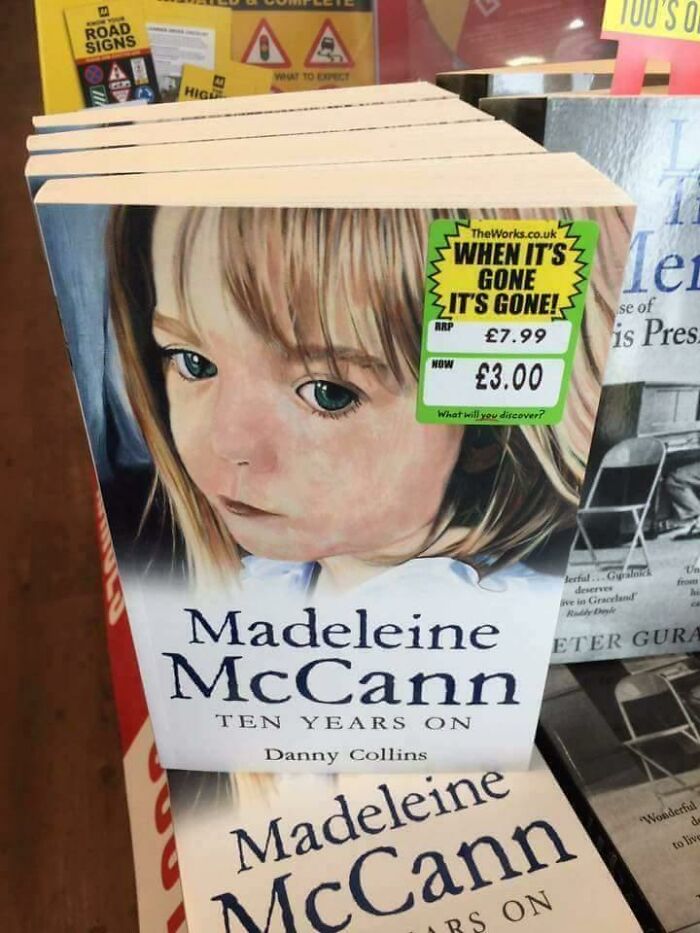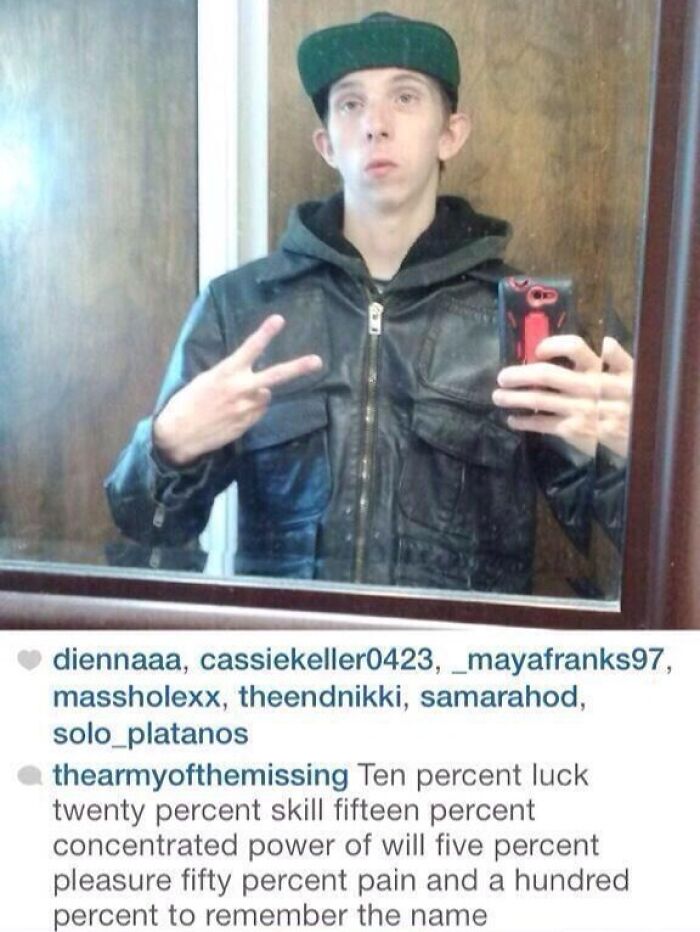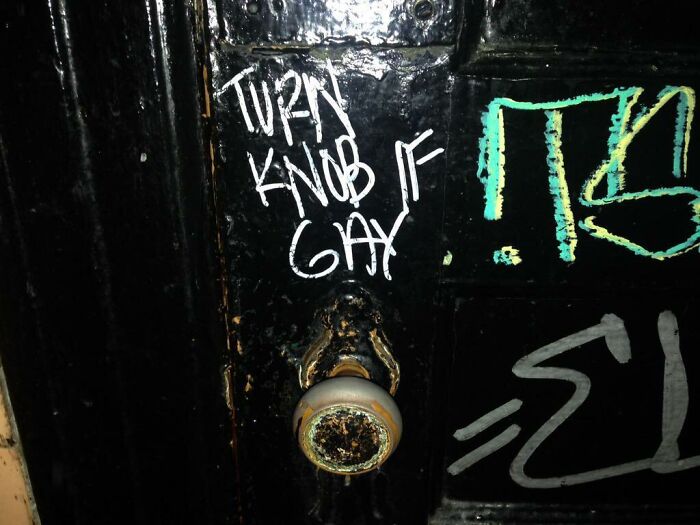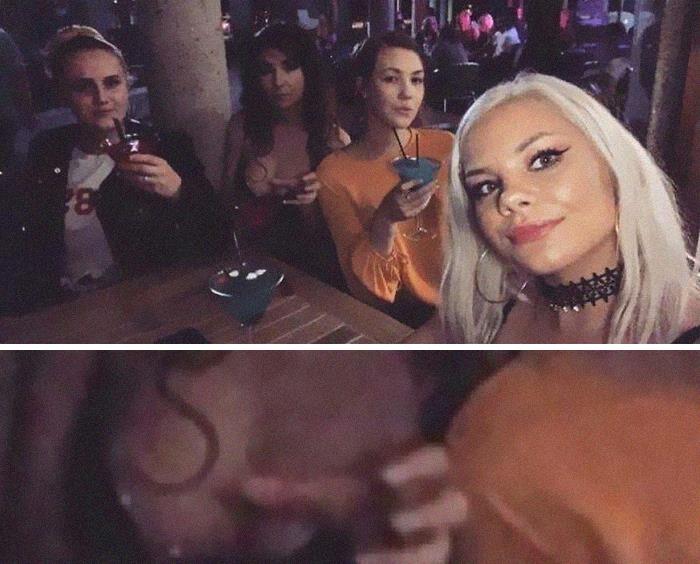We like to laugh, we might like to cry, but we also like to cringe from time to time. And the proof is in the pudding: The Office, Tim Robinson's I Think You Should Leave, and Curb Your Enthusiasm (despite its imminent ending) are perhaps forever embedded in our popular culture. The same trends rule the digital space, as pages and accounts featuring cringe humor are probably the most popular.
The X (Twitter) page Cringe Photos falls into the family of cringe content that thousands of people either enjoy or feel extremely uncomfortable interacting with. As there is never a shortage of awkward and cringe-inducing content here on Bored Panda, we're bringing you a selection of the best pictures from said X (Twitter) account.
We reached out to an expert in all forms of comedy, Dr. Steven S. Kapica, assistant professor of English at Keuka College and writing program director. He kindly agreed to tell us more about what constitutes cringe comedy, what cringe is not, why we sometimes fear and loathe cringe, and why our sense of humor is inevitably declining. Read his opinions below!
#1

Image credits: PhotoCringes
Kapica begins by defining cringe comedy as what it is not. "It is not 'shock comedy.' It is also not 'anti-woke comedy,'" he says. And while he has a lot more to say about the latter, the point that he emphasizes is that cringe comedy is not 'punching down.' "'Anti-woke comedy' is 'punching down' comedy. And we all know which direction we're supposed to punch, right?" he asks rhetorically.
"Cringe is not shock, and it's not anti-woke. It is a unique, abjectly beautiful, absurd beast," Kapica concludes. But it's still best to explain it by comparing it to 'shock comedy.' The latter, according to Kapica, is about "saying the quiet part out loud." It's about braveness and the audacity to cross lines, and shock comics often pride themselves on being contrarians.
#2
Probably not the best choice for a discount sticker..

Image credits: PhotoCringes
#3

Image credits: PhotoCringes
"Shock works precisely because its artisans are bold, daring, and singular," Kapica tells Bored Panda. "They take full ownership and responsibility – and rightly suffer the consequences should there be any." He gives stand-up comedian Daniel Tosh as an example. "Shock is offensiveness for offensiveness's sake. Often, because the shock comedians own and bear the brunt of [the] backlash, they are rewarded by fans. [Like] Howard Stern."
"But shock is not cringe," Kapica clarifies. "Cringe does not emerge from a reversal or distortion of a premise, nor does it emerge from oppositional stances. Cringe does not point out incongruity. It breaks incongruity."
Let's look at this from the perspective of constructing a joke. It starts with a premise that is not funny, and then it's the comedian's job to deliver the punchline by breaking the audience's expectations. Cringe starts with a funny situation or premise and pushes it to a breaking point until it becomes unfunny – or awkward. "Cringe starts with laughter and then turns that laughter against the one who is laughing," Kapica explains.
#4
I thought she was holding that tree.

Image credits: PhotoCringes
#5

Image credits: PhotoCringes
#6

Image credits: PhotoCringes
But that doesn't mean that cringe comedy is foolproof. Those who use cringe risk alienating their audience. "This is the audience that gets angry and walks out on Andy Kaufman for being intentionally, relentlessly unfunny," Kapica says. According to him, cringe comedy is successful when it comes full circle. "It starts with laughter, turns the laughter to cringe, and then returns the cringe to laughter."
He gives the film Borat (2006) as the most famous example of cringe in movies. It works and is so successful because the film directs its comedic ire and cringe at Americans, not the Kazakhs. "Borat's premise is inherently funny (from a subject position of superiority); however, the cringe ultimately reveals the lunacy of American exceptionalism."
#7

Image credits: PhotoCringes
#8

Image credits: PhotoCringes
#9

Image credits: PhotoCringes
Other examples of cringe include The Eric Andre Show and I Think You Should Leave. "Andre is gonzo absurdism at its finest," Kapica says. "I Think You Should Leave puts it right there in the title." Andy Kaufman is an progenitor of comedic cringe. Kapica also points to Jerry Lewis' films from the 1960s and the 'Fix My Hat' scene in The Ladies Man (1961). "The hat scene in The Ladies Man (1961) is pure genius cringe," Kapica says.
#10

Image credits: PhotoCringes
#11

Image credits: PhotoCringes
#12

Image credits: PhotoCringes
But cringe is risky business, Kapica observes. Comics who choose to dabble in it need to do so with care, as audiences might interpret it as debasement and perhaps the lowest form of comedy. "We like to believe that punching up or punching down is obvious, easy to spot. No one really wants to be Biff Tannen [from] Back to the Future," Kapica says.
"But systemic prejudices can easily be traded on in ways that not only perpetuate negative comedic tropes but reinforce underlying, supremacist worldviews. Cringe is arguably the riskiest form of humor, so its merchants must be hypervigilant with regard to intent in order to avoid such reinforcement."
#13

Image credits: PhotoCringes
#14

Image credits: PhotoCringes
#15

Image credits: PhotoCringes
What matters is the comic's or comedy writer's intent. "Free speech is the red card used by those who have been accused of dispensing bigoted humor. 'Just a joke.' 'I don't really mean it.' Except bigoted humor has nothing to do with free speech. It has to do with intent," Kapica tells us.
"If the intent is to elicit laughter at the expense of someone else's being, then it's hack comedy. If the intent is to complicate, transform, defend, speak truth to power, or even self-immolate, then the source of the cringe and laughter is freed of ethical transgression."
#16
You had one job.. Literally one job

Image credits: PhotoCringes
#17

Image credits: PhotoCringes
#18

Image credits: PhotoCringes
Kapica has written about American comedian George Carlin and is currently working on a book about his rhetorical genius. For Carlin, nothing was off-limits. But in his comedy, he always strived to go toward justice, and he always committed to punching up.
Kapica quotes Carlin's 1990 HBO Special, Doin' it Again: "It's the context that counts. It's the user. It's the intention behind the words that makes them good or bad. The words are completely neutral. The words are innocent… It's the context that makes them good or bad." He says that the same is true when it comes to cringe: intent and context matter.
#19

Image credits: PhotoCringes
#20

Image credits: PhotoCringes
#21
Proposing. In McDonald's. With a chicken nugget.

Image credits: PhotoCringes
Kapica made similar observations in his piece about American comedian Gallagher. "While stand-up comedy at its best is powerful critique, at its worst – which is sadly more often the case – it reifies prejudice, and it perpetuates ignorance and injustice," he warned.
"While we might be inclined to [brush off comedic pandering] as harmless fun – to roll our eyes at the ignorance fueling the post-truth era – doing so would make us complicit."
#22

Image credits: PhotoCringes
#23

Image credits: PhotoCringes
#24

Image credits: PhotoCringes
So, where do we go from here? What's the future for our collective sense of humor, especially in digital spaces? Kapica points to Idiocracy (2006) as a "prescient" statement of its decline. "That decline is hastened by social media, digital culture, even AI," he explains.
"Social media and digital culture bypass important culture work – editing, contemplation, temperance, review, practice, reception. The speed of the digital is such that we get everything now now now! So when we combine [the] speed of access and distribution with blatant disregard for editing and filtering – and then pour in a big scoop of cringe? Goodbye intent. Goodbye context. Hello outrage."
#25

Image credits: PhotoCringes
#26

Image credits: PhotoCringes
#27

Image credits: PhotoCringes
Currently, Kapica doesn't have much faith in the Internet's critical thinking abilities. "I would argue that the vast majority of social media-based comedy consumers lack the critical acumen to determine if a bit of cringe is punching up or punching down," he says.
"A quick Google search for 'Borat,' for instance, reveals that enough viewers of the film have asked questions about him to merit a 'People Also Ask' box containing questions like 'Is Borat really from Kazakhstan?' and 'Is Borat based on a real person?' A consumer culture that asks these questions about incisive, daring, shocking, boundary-pushing, cringe comedy is not a culture served by wildly unfiltered digital content."
#28

Image credits: PhotoCringes
#29

Image credits: PhotoCringes
#30

Image credits: PhotoCringes
However, perhaps it isn't all so bleak. "There is some amazing, anti-authoritarian comedy being produced on digital platforms and by amateur comedians," Kapica says, trying to see the bright side. "But the sum total of it all is a dumpster fire that I fear will inevitably lead to a Netflix-produced Ow! My Balls!"
#31

Image credits: PhotoCringes
#32

Image credits: PhotoCringes
#33

Image credits: PhotoCringes
#34

Image credits: PhotoCringes
#35

Image credits: PhotoCringes
#36

Image credits: PhotoCringes
#37

Image credits: PhotoCringes
#38

Image credits: PhotoCringes
#39

Image credits: PhotoCringes
#40

Image credits: PhotoCringes







